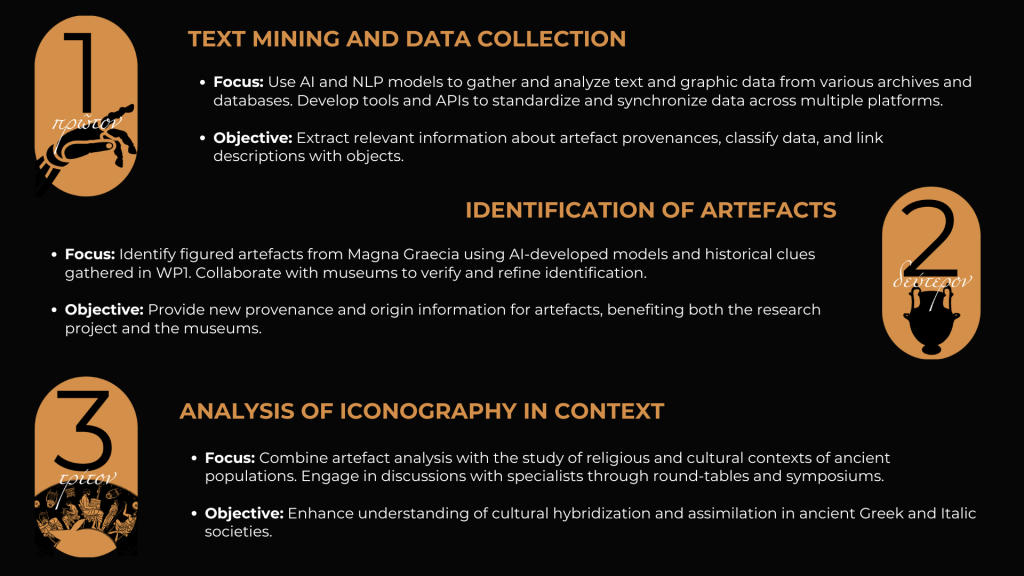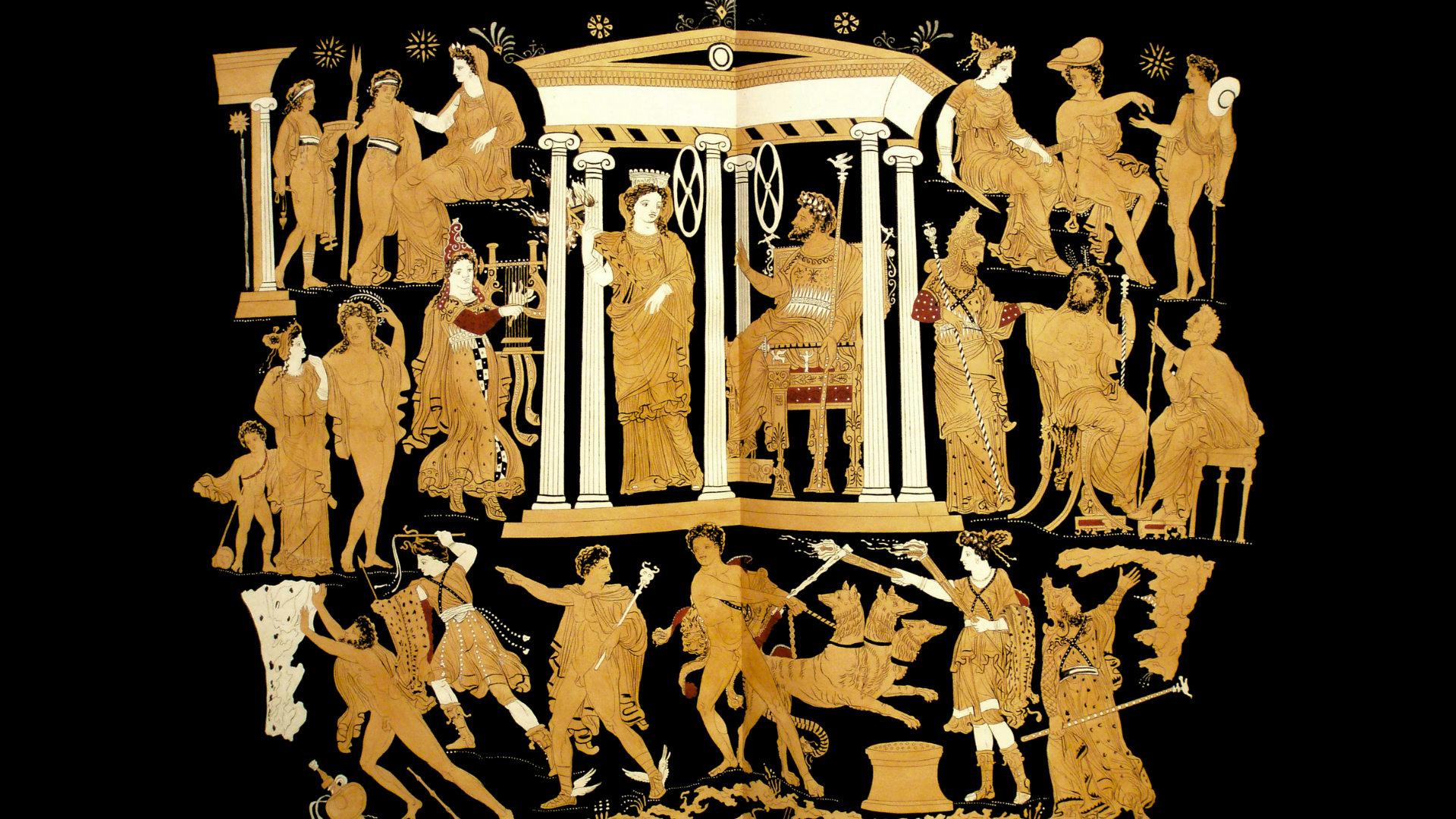
The PROVENANCES project addresses the critical issue of unknown or unproven origins in the study of artefacts discovered over the past three centuries. By leveraging extensive documentation and innovative methodologies, this project aims to shed new light on these artefacts and their cultural contexts. With a focus on pre-Roman Magna Graecia, the project seeks to redefine iconography analysis by linking new information on cultural contexts known only through images in the absence of textual sources. The estimated corpus includes up to 4000 figured artefacts, such as vases, terracotta, bronzes, and jewels.
Researchers often encounter the problem of unknown or unproven origins in visual arts studies. Many artefacts lack precise provenance, resulting in fragmented and scattered information. The PROVENANCES project takes a comprehensive approach, aiming to map previous excavations and provide contextual frameworks for these artefacts. By starting with archival sources, it is possible to draw a precise map of previous excavations and give context to artefacts that have lost their archaeological context. This approach not only enhances the credibility of museum collections but also contributes to a better understanding of the cultural history of Greek and indigenous societies in Magna Graecia.
The PROVENANCES project proposes an extensive review of archival sources dealing with archaeological discoveries from Magna Graecia between 1734 and 1922. This period spans from the establishment of the Kingdom of Naples as a sovereign state under Charles de Bourbon to the final effects of the integration of the former kingdom into unified Italy before the rise of nationalist discourses under the fascist regime. The project aims to establish accurate provenances and findspots for up to 4000 artefacts, including vases, terracotta, bronzes, and jewels. By reconstructing the framework of excavations and ancient discoveries, the project will provide a comprehensive understanding of these artefacts and their historical significance.

The project has three main objectives:
a) Recover the origins of past looted artefacts (estimated findable corpus: 4000 artefacts).
b) Understand the figurative language in context by linking artefacts to their specific cultural and historical backgrounds.
c) Enrich the cultural history of Magna Graecia by integrating new findings into the broader historical narrative, enhancing our understanding of the complex relationships between artefact production, dissemination, and reception.
The PROVENANCES project employs a dual approach, combining traditional methods with advanced AI models. Traditional methods include a comprehensive examination of unpublished documentation from archives in Italy, France, and Germany, and physical analysis of artefacts through various types of light and sample analysis. This involves archival, historical, iconographic, and stylistic analysis to establish artefact provenance and context.
In parallel, the project develops and implements digital tools and AI models to analyse and present provenance data. A digital roadmap site will be created, offering geographical maps, artefact overviews, and links to archival documents. Standardised APIs and data transformation pipelines will ensure smooth coordination and real-time data synchronisation across various databases. AI and NLP techniques, such as BERT and GPT, will extract pertinent information from large text datasets, while Computer Vision and OCR algorithms will process images and recognise handwriting. These AI models will form a sophisticated pipeline to provide quantitative proofs of provenance, presented in flexible formats suitable for researchers, students, and the general public.
